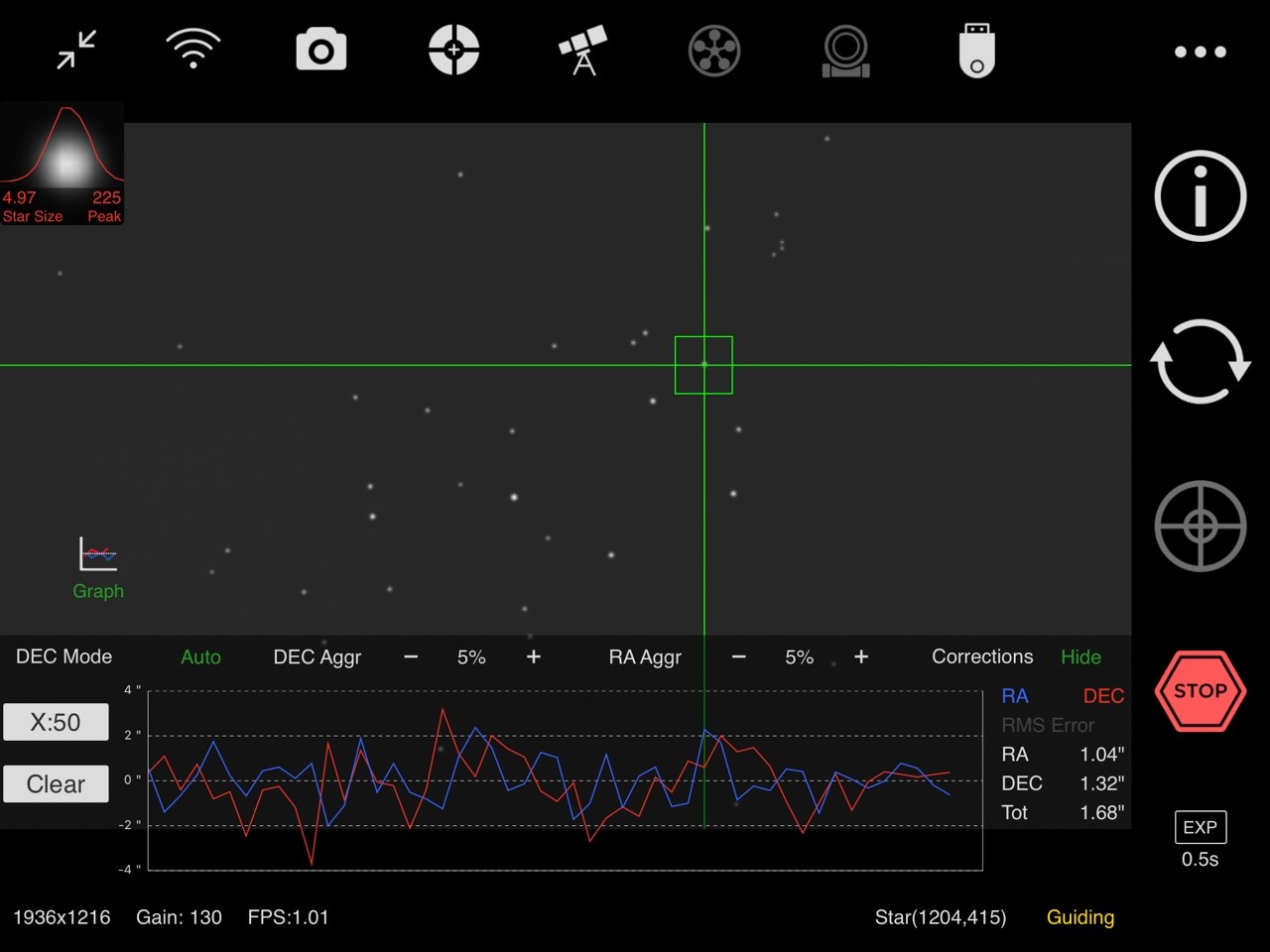To measure the effectiveness of reduction of centroid error in ASIAIR v1.6 Beta's multi-star autoguiding, I again used my mount simulator.
The simulator uses an ASI174-mini as a guide camera, with an equivalent focal length of 212mm; so a moderately short "guide scope." (I usually use 200mm and 250mm guide scopes for my 454mm focal length OTA.)
I added Gaussian noise to the x and y axis of each star (every star has its own independent noise values) in the gnomonic tangent plane that is centered at the RA and declination of the sky. Since the x and y are independent Gaussian noise, the centroid should have a Joint Gaussian probability distribution, which is radially symmetric; what you would expect star movement due to atmospheric turbulence to look like -- i.e., no bias in any direction.
For the image captures, I used the Pleiades as the star field because there are lots of bright stars (my simulator currently uses the Hipparcos catalog which only goes down to 9th Magnitude stars -- I will soon be adding stars from the THCHO 2 catalog).
I also turned the MAX RA and Declination pulses to 1 millisecond (the minimum) and turned RA and declination aggressiveness to their minimums (5%). Together, these causes practically no corrections to the mount, so the guide graph should show the plot of the centroid of the guide star (or the average centroid, in the multi star case).
This is the guide graph for the familiar single star case:

Without changing anything else, I switch to multi-star autoguiding (i.e., allowing ASIAIR to pick its own guide stars):

Since there is practically no guide pulses (1 millisecond), the guide graphs and RMS errors should merely show the changes to the centroid of a star (or the average centroid of multiple stars).
Notice that the centroid estimation RMS error dropped from 1.68" to 0.70". If, in the past, your guide error is limited by "seeing" (and not by mount mechanicals), you can expect the same kind of improvement (a little better than a factor of two). If you were limited by mount mechanics, then multi-star will do nothing for you. I suspect that most people should fall somewhere in between, and over time, perhaps ZWO can improve the algorithm (with 12 stars, they should be able eek out a little more than a factor of two).
I did notice that the frame rate had dropped; perhaps processor bound? In the coming days, I will be trying a USB 3 based ASI290MM instead of the USB 2 based ASI174-mini above (which also has a larger pixel count).
Until I can test under real stars to know for sure, the multi-star guiding looks promising for now.
Chen